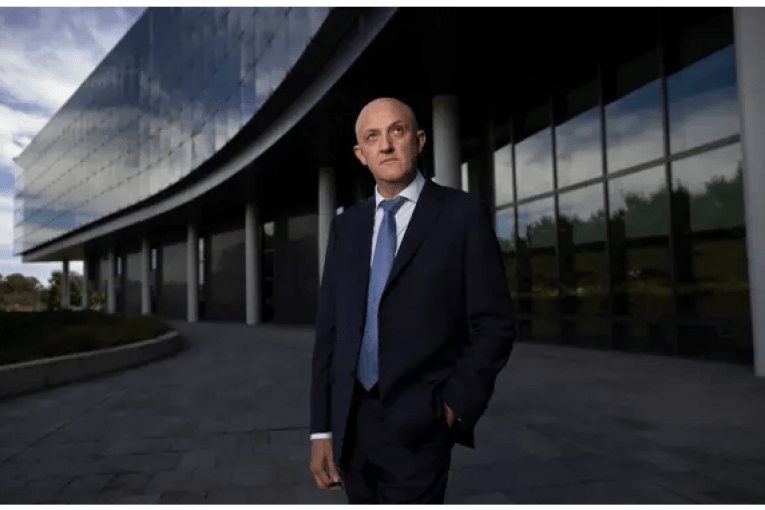How a little bit of truth, in the wrong hands, can be a very dangerous thing
In these days of social media and 24-hour news cycles, we seem to have completely lost our grasp on what is true, writes Shane Rodgers


Donald Trump.(Photo: AP Photo/Alex Brandon)
For most of my childhood, my parents were in search of a song. They heard it on the radio once and looked for it every time they went to a record store. When I left home at 21 the song remained elusive.
This was back in the days when the internet was just a glint in a dreamer’s eye. You couldn’t Google a song to find it. You just stayed vigilant for the possibility of discovery. You had to be patient.
The evasive song was called ‘What is Truth?’ by country singer Johnny Cash.
The childhood quest for ‘What is Truth?’ helped trigger a lifelong curiosity about the nature of truth. It is a surprisingly intriguing, challenging and deep question. What is truth? No, really. Do we know any more?
It seems that establishing the contemporary definition of truth has become something of an all-pervasive global preoccupation.
Anything we disagree with can be written off as “fake news”. Everyone has access to “media” and vast audiences. We don’t really know if we can trust information or not. We don’t know if it has been checked or if it is deliberately misleading. Even photographic “evidence” could be an illusion conjured through Photoshop.
In this world, it seems that every day the truth gets a little harder to find.
The truth dilemma came back to me starkly last week when I watched a Netflix documentary called The Social Dilemma.
In a nutshell, it highlights the concerns from some very smart people that social media is creating societal subsets of likeminded people who congregate in digital enclaves and just reinforce their own world view to each other. This happens without the checks and balances of objectivity or alternative voices.
This can cause extreme, and even dangerous versions of “the truth” to take hold in vast numbers with potential dire consequences for our social cohesion and systems of democracy. According to the documentary, the new world of social media also allows mass manipulation of information and people, with few checks and balances and very loose rule-sets around what is real, ethical and reasonable.
Sadly, the documentary itself does exactly what it is highlighting as potentially dangerous. It interviews only people with effectively the same views on the issue. As a former “old-school” journalist I found myself craving the alternative view, which clearly exists, so I could have a more informed opinion.
It seems that the growth of digital tribes is just one of the manifestations of an assault on the truth that was seeded decades ago.
When I started in journalism in the 1980s, so-called “spin” was in its infancy as a science. In the years hence it has grown in manpower, sophistication and infiltration.
Information that is “spun” is not necessarily wrong. It is simply distorted towards a version of the facts that favours a particular viewpoint or outcome. Sometimes this encourages healthy debate. Sometimes it just suppresses relevant facts.
Adding to this, much of the remnants of what we used to call mainstream or mass media now unashamedly sits in a philosophical paddock rather than on the fence where is once resided. The trends even have me questioning the very nature of a “universal truth”.
As a child when we wanted to assert something as true, we claimed it to be a “scientific fact”. As you get older you realise that even scientists disagree on what constitutes a fact. For every learned study there seems to be another one with totally contradictory results.
As a journalist, you quickly learn the nuanced nature of truth. Most of us went into journalism because we wanted to find the truth and use it to improve the world.
Quickly this becomes more complicated. You talk to someone and the facts that they present leave you outraged, and you set out to right the wrong. Until you talk to the person at the other side of the issue who has an equally plausible, and totally opposing take.
Over time you start to wonder if the truth is out there at all. Is it as simple as right or wrong or do most situations revolve around the same set of circumstances viewed through different lenses, from different vantage points and from different backgrounds? “One man’s trash is another man’s treasure.”
For all of its faults, journalism in its heyday had a lot of checks and balances. Hardened senior editors would question everything and set a high bar on truth and proof well before a story was published. At least four and up to seven people checked everything before it went live.
Even then we used to lament what former colleague, the late Peter Charlton, termed “degrees of inadequacy”. In other words, despite the best attempts at objectivity and best-intended quest for the truth, we were only as good as the time we had and the information we could access.
In our new world of truth pulled and manipulated in hundreds of directions like Mr Fantastic in the Fantastic Four, even the recording of our history becomes problematic.
A librarian told me once that written history was riddled with errors because a journalist got it wrong at some point in time and the inaccuracy then was cleansed and legitimised in authoritative text.
Imagine using today’s vast amount of online words as the basis for history. Future historians may well conclude that the world in 2020 was ruled by Instagram bikini model influencers and our “monarchs” were determined on The Bachelor.
Personally, I’m not ready to give up on the truth even if it ultimately proves to be a holy grail that is eventually written off as a myth.
I didn’t give up on looking for the ‘What is Truth?’ song either.
When I was in my 30s I was flicking through a CD discount bin one day, picked up a Johnny Cash CD and there it was. I had to look at it many times to convince myself it was real.
By then my mum had died way too young without ever hearing the song again but I bought the CD and gave it to my Dad. He just gave an incredulous smile and shook his head. We had completed a quest that had long ago fallen into the background of our lives.
We listened to the song (recorded in 1971) together in silence.
The old man turned off the radio
Said, “Where did all of the old songs go
Kids sure play funny music these days
They play it in the strangest ways”
Said, “it looks to me like they’ve all gone wild
It was peaceful back when I was a child”
Well, man, could it be that the girls and boys
Are trying to be heard above your noise?
And the lonely voice of youth cries “What is truth?”
Maybe things haven’t changed so much after all.
Shane Rodgers is a writer, business executive and former journalist and editor.












